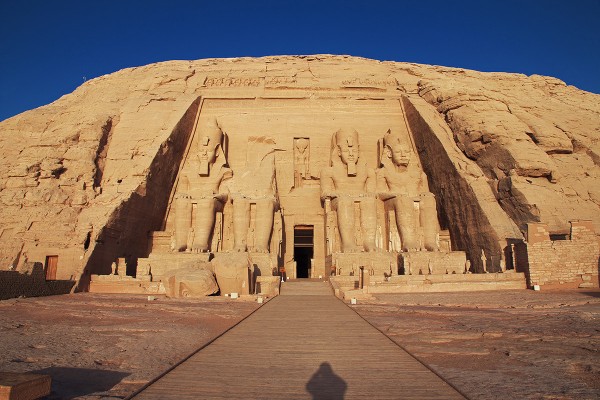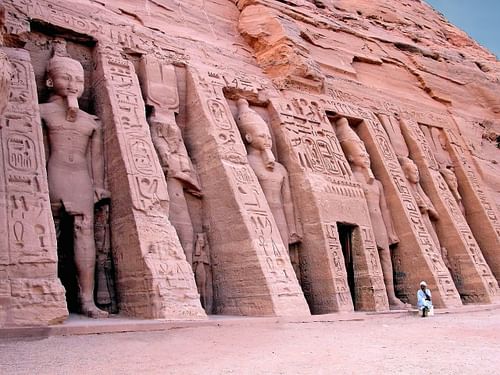Exploring Cairo & Luxor in 05 Days
Duration
5 Days
Tour Type
Classical Packages
Location
Egypt
Destinations
Travel Style
Overview
Exploring the beauty of Egypt in 5 days. First, you will visit one of the Seven wonders of the world, the Pyramids, exploring the desert antiquities dating back to the beginning of a civilization that arose over 5,000 years ago. continue to Luxor to the land of Pharaohs which includes stops at The Valley of Kings - The Valley of Queens - the Colossi of Memnon, The Karnak, and The Luxor Temple.
02 Night's Cairo - 02 Nights's Luxor.
Included
Excluded
Itinerary
Welcome to Egypt! Upon arrival, your tour begins when you are greeted by our representative Executive Travel who will assist you through immigration and customs formalities. After you have collected your luggage, he will then take you, in our deluxe vehicle, to your Cairo hotel overnight. Optional Dinner cruise on board river Nile in Cairo
After breakfast, you will meet your Egyptologist guide in the hotel lobby. Begin by exploring the desert antiquities dating back to the beginning of a civilization that arose over 5,000 years ago. You will venture through the desert to visit some of Egypt's oldest sites. First, go to the Pyramids of Giza. Nothing evokes the long and intriguing history of Egypt as powerfully as the pyramids. Rising from the desert, Khufu (Cheops), Khafra, and Menkaura symbolize the enigmatic tug of Egypt in our imaginations. The Great Pyramid of Cheops immortalizes the son of Sneferu and Hetephres. Though little is known about this pharaoh, his pyramid is the largest of the three and is comprised of 2.3 million stone blocks, each weighing an average of 2.5 tons., the colossal statue of the Great Sphinx, which as stood guard over the pyramids for millennia. Carved from an outcrop of rock, the Sphinx remains the ultimate symbol of Ancient Egypt with its lion's body and a human head. After your exploration of the pyramids, drive to Memphis and Sakkara. The necropolis at Sakkara is where King Zoser's Step Pyramid was built. This vast site in the heart of the desert plateau is the largest necropolis in Egypt. Extending for almost five miles, the complex forms a collection of pyramids, temples, and tombs that is fundamental to understanding the history of ancient Egypt. Memphis is where the remnants of the city's first capital, once the most cosmopolitan city in Egypt, are scattered in the desert. You will also see the carved limestone colossus of Ramses II. Then you will back to your hotel and overnight. (B.L) PM: transfer to Cairo airport to take your flight to Luxor. Arrive in Luxor then you will be transferred to your hotel overnight. Meals: Breakfast & Lunch
After breakfast. Today you will discover the legendary Valley of the Kings that encompasses the East Valley, home to the tombs of the New Kingdom Pharaohs, and the West Valley, which has only one tomb open to the public - the tomb of Ay, who succeeded Tutankhamun to the Egyptian throne. The temple of Queen Hatshepsut of Dynasty XVIII was built just north of the Middle Kingdom temple of Mentuhotep Nebhepetre in the bay of cliffs known as Deir el-Bahri. In ancient times the temple was called Djeser-djeseru, meaning the ’sacred of sacreds’. It was undoubtedly influenced by the style of the earlier temple at Deir el-Bahri, which Hatshepsut chose as the site of her temple in a valley sacred to the Theban Goddess of the West. More importantly, it was on a direct axis with Karnak Temple. Two huge ruined statues, the Colossi of Memnon, are around 17 meters/56 feet tall and once stood at the entrance gate of the mortuary temple of Amenhotep III, though very little of the temple behind them remains today. They were cut from two massive granite blocks, brought from quarries near Cairo, and carved to represent the pharaoh Amenhotep III of Dynasty XVIII. The Valley of the Queens is near the better-known Valley of the Kings, on the west bank of the Nile across from Thebes (modern Luxor). This barren area in the western hills was chosen due to its relative isolation and proximity to the capital. The pharaohs of the 18th Dynasty chose to be buried in rock-cut tombs instead of the traditional building of pyramids as burial chambers (perhaps because of their vulnerability to tomb robbers. This afternoon, you visit the East Bank with its fabled Karnak Temple and Luxor Temple. The temple of Luxor is close to the Nile and parallel to the riverbank. King Amenhotep III, who reigned 1390-53 BCE, built this beautiful temple and dedicated it to Amon-Re, king of the gods, his consort Mut, and their son Khons. This temple has been in almost continuous use as a place of worship up to the present day. It was completed by Tutankhamun and Horemheb and added to by Ramses II. Towards the rear is a granite shrine dedicated to Alexander the Great. Osiris. A 20-meter/66-foot high, mud brick enclosure wall, surrounded all of these buildings. The Amon Ra Temple was known during the Middle Kingdom period as Ipt-Swt, which means the Selected Spot. It was also called Pr-Imn, or the House of Amon. The name Al-Karnak in Arabic was derived from Karnak, which means fortified village Back to your hotel and overnight .Meals: Breakfast & Lunch
After breakfast. Transfer to Luxor airport to take your for flight to Cairo. Arrive in Cairo then you will meet your Egyptologist guide to start your introduction to Cairo at the famous Egyptian Museum of Antiquities. The museum houses the greatest collection of Egyptian royal treasures in the world. Your expert guide will take you through the highlights, including the famous Tutankhamun Collection of golden treasures You will then visit The Alabaster Mosque of Mohamed Ali, the largest structure built during the first half of the 19th century. Counting to visit the most famous Bazaar in the middle east Khan El Khalili Bazaar. Meals: Breakfast & Lunch
Today you will be transferred to the airport to take your international flight back home. Meals: Breakfast .
FAQs
What Is The Children's Policy?
What Is The Booking Policy?
Tipping?
How To Get Egypt Entry Visa?
What Is The Cancellation Policy?
Extra prices:
- {{total_price_html}}
- {{pay_now_price_html}}








